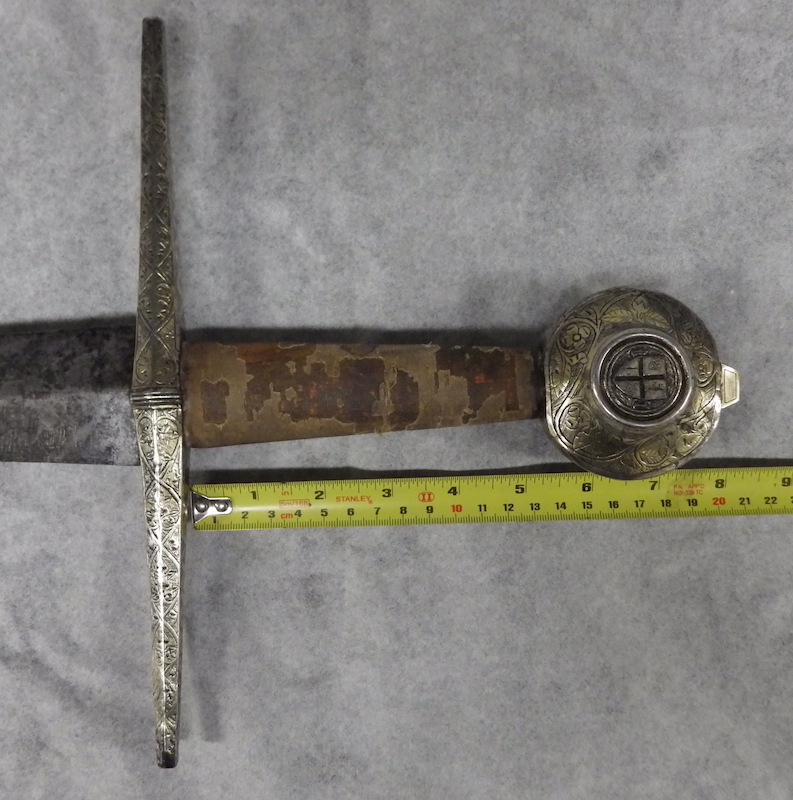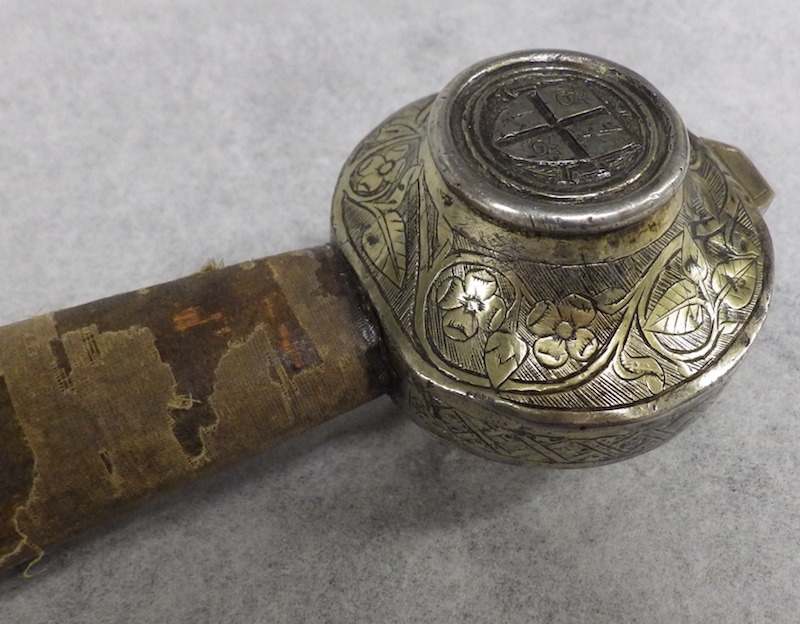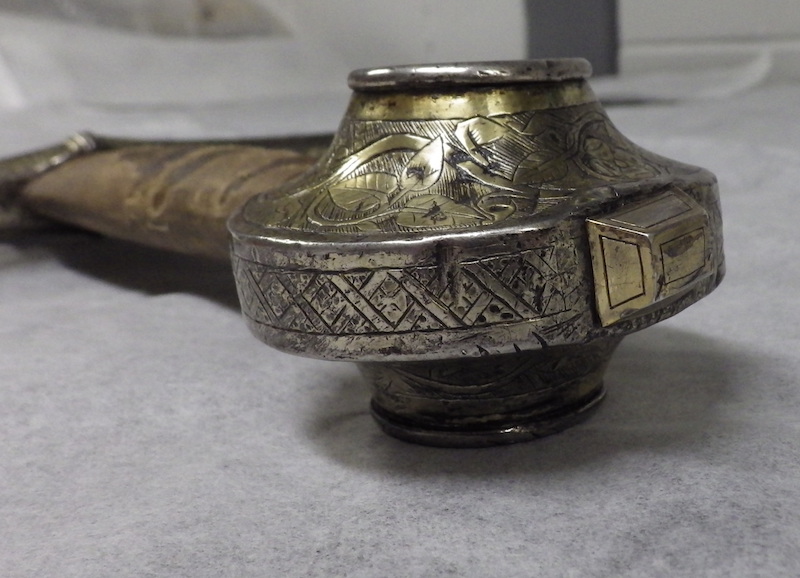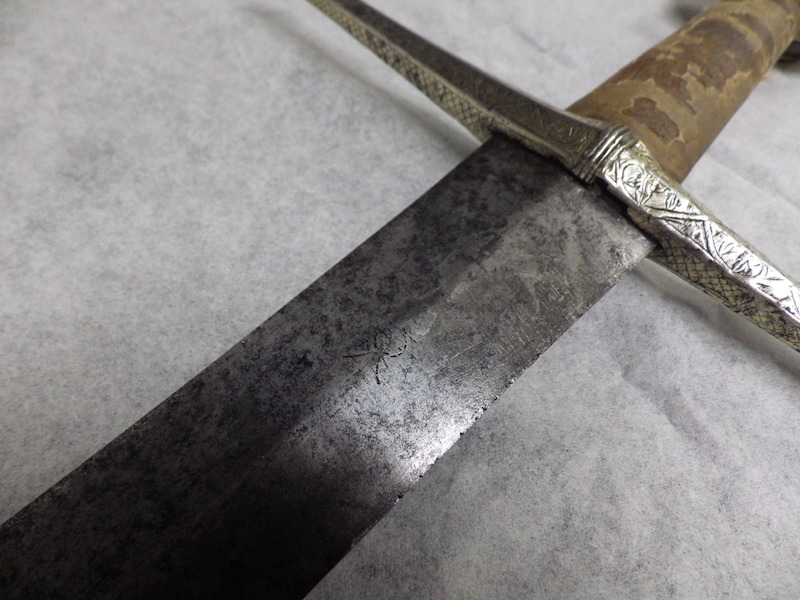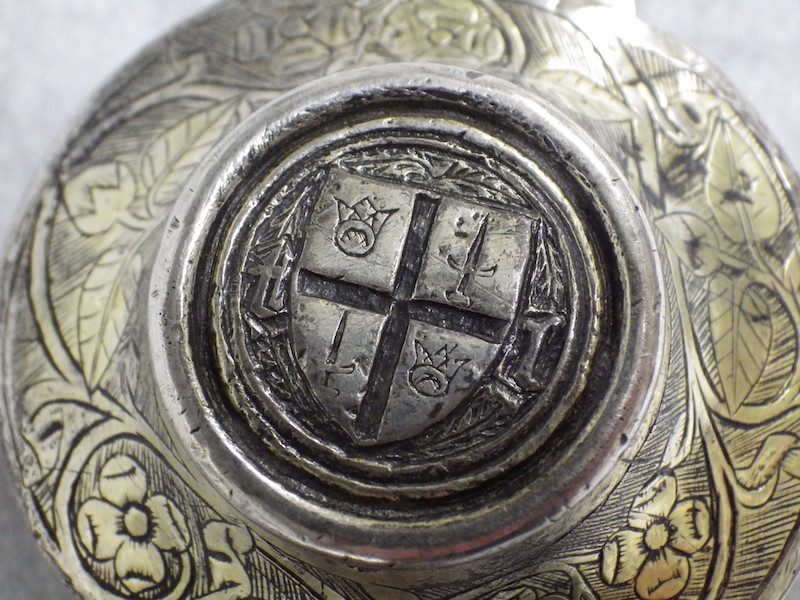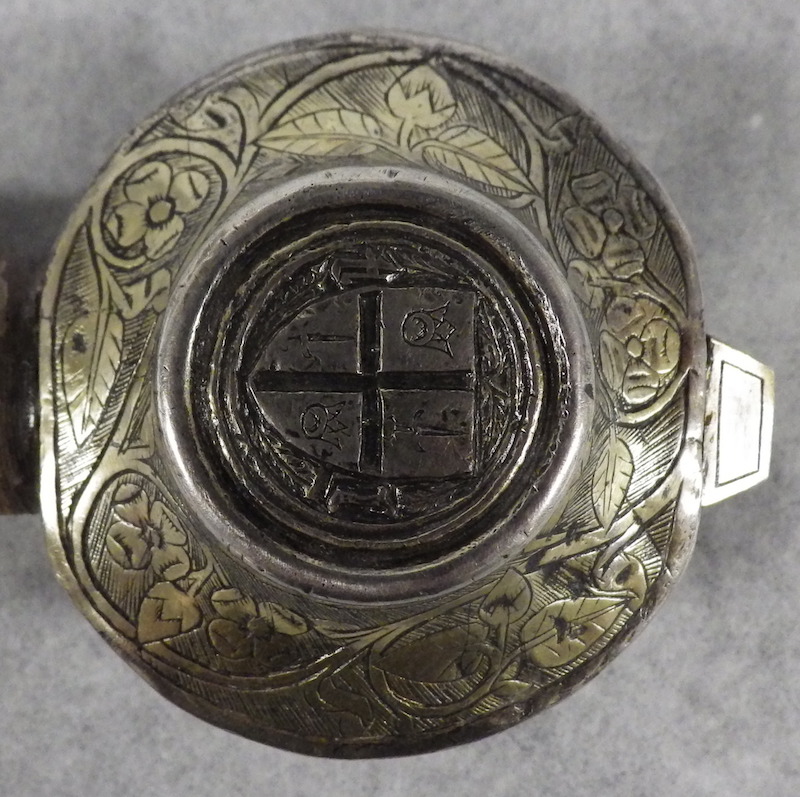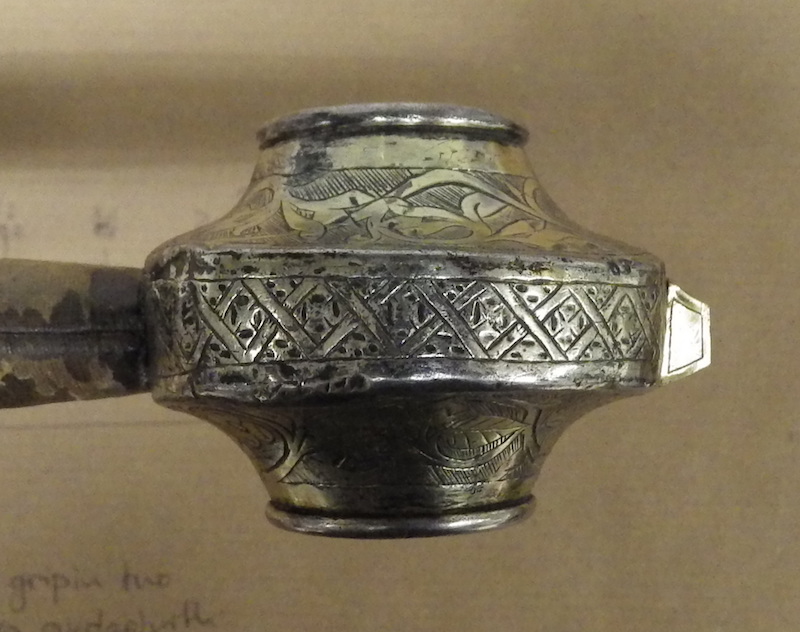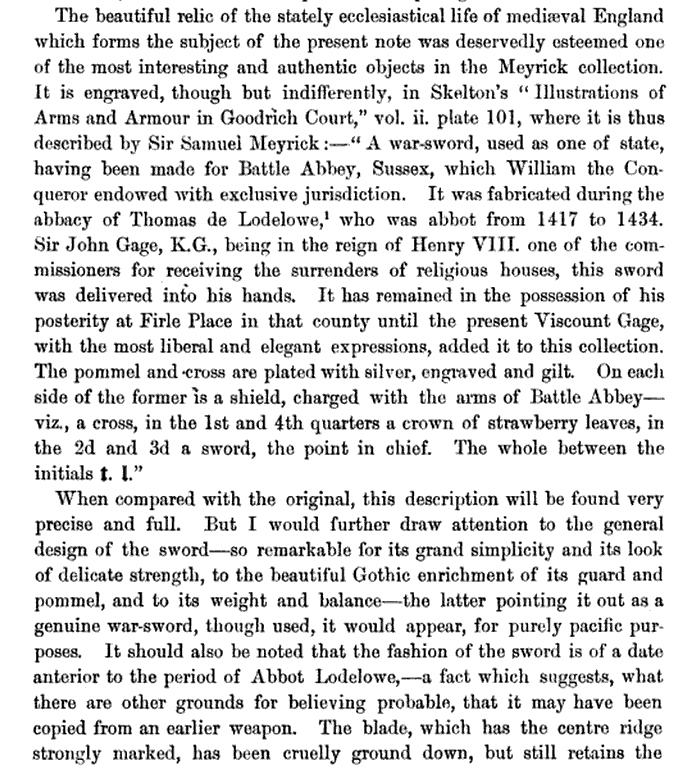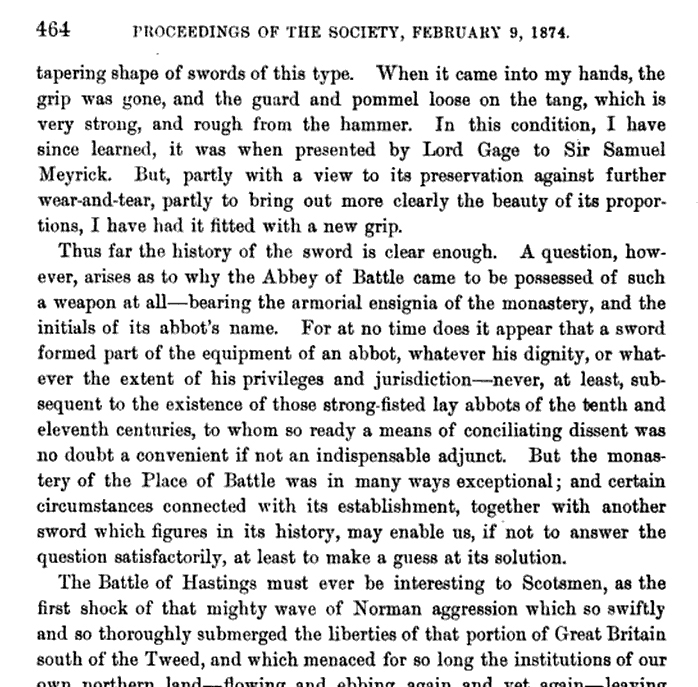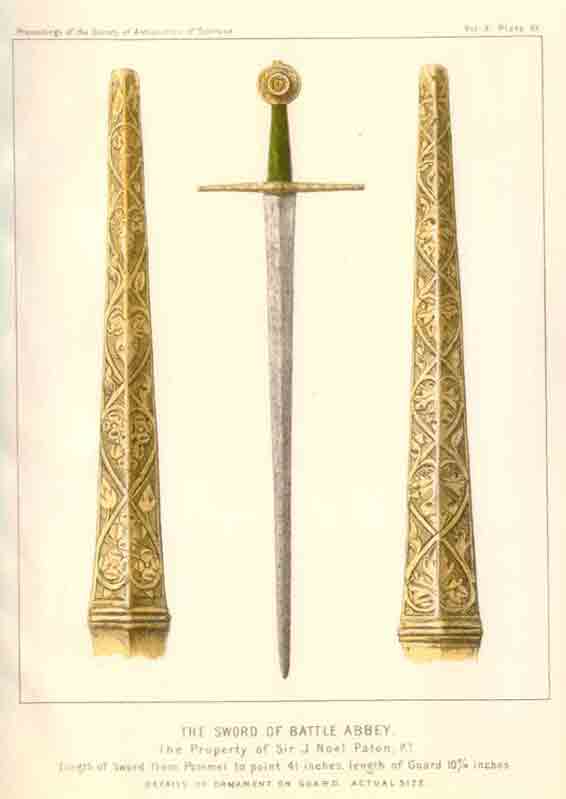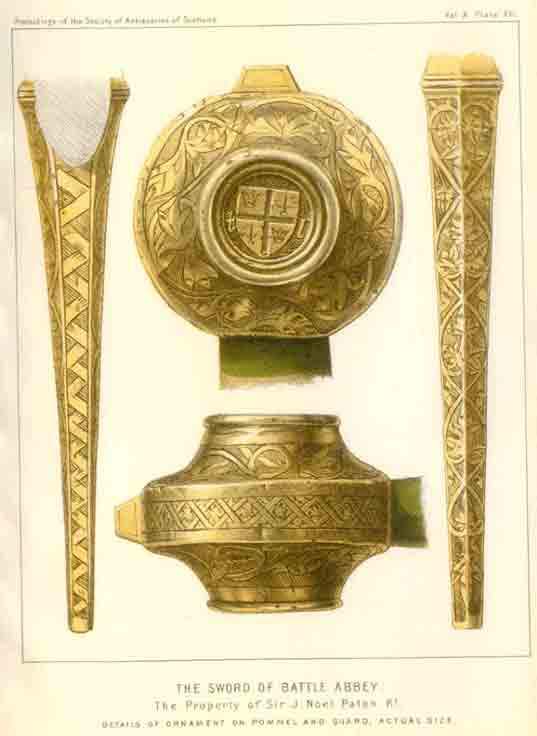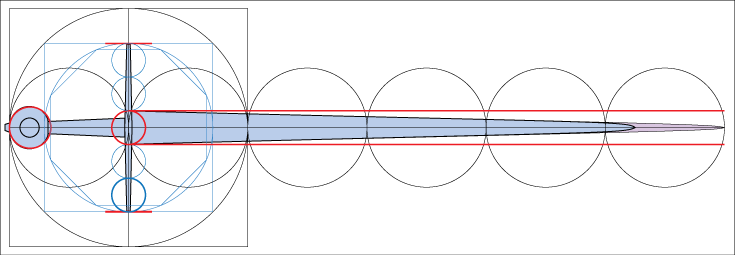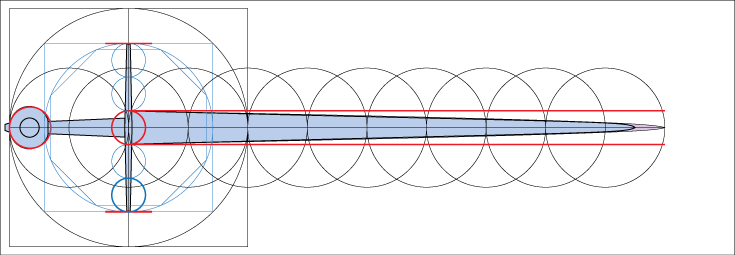I have been commissioned to make a very interesting project on behalf of English Heritage; a reproduction of the 'Battle Abbey Sword'
"The Sword of Battle Abbey, steel with silver-plated and gilt decoration, with the arms of Battle Abbey and the initials t l for Thomas de Lodelowe, who was Abbot of Battle Abbey between 1417 and 1434, on both sides of the pommel: English, 1417 - 1434
Museum reference
A.1905.633"
The sword was part of the Meyrick Collection and was donated to the Museum of Scotland early in the 20thC.
EH will be opening an exhibition in Battle Abbey and this will form part of it later this year and so I have been commissioned to reproduce it.
The sword is a fascinating piece, but the first thing that has to be said is that it is very curious; the following being points of note.
The blade is 32"/82cm, so is presumably a single hander, albeit a long one, the grip is 5"/12.5cm, which is long for a single hander and short for a hand and a half.
The guard is 10.75"/272mm wide.
The pommel is massive and is solid. It is 63mm x 69mm (approximately round), with an overall thickness of 51mm.
The blade starts at 3/8"/9mm thick at the guard and is still 1/4"/ 6.2mm 16"/42cm from the guard and 3/16"/4.2mm 29"/74cm from guard and is notably very heavy and stiff.
The guard and pommel are made in iron with silver plates of around 0.3mm thick soldiered onto the surface and then engraved, making every surface silver covered and these have then been gilded.
The grip is wood and then looks like it has been leather covered and then fabric covered. The grip is substantial.
I flew up to Edinburgh to examine this sword, but unfortunately didn't weigh it and do not have a weight for it at this time, but my impression was 'very heavy'. I guess we will find out in due course.
This will of course be a difficult piece to reproduce because of the engraving and the plating, but in fact this has steered me in a certain way. I would love to have made this as the original was, but unfortunately the original was fire gilded which is nit open to me now, so I would have to electro plate the gold. However the various solutions required during the process will go into wherever there are voids under the silver (and whatever I do, there will be some) and will cause problems, so I have decided that the pieces have to be solid to ensure a good gold plate.
So for this reproduction, I have decided that I will make in wax, cast in bronze and then silver and gold plate from there.
Emotionally I find this a shame as it looks like a great project to learn on, but the gold plating messes this up.
The handle is also curious. There is no witness of how the fabric was fixed or seamed, or indeed what it may have been - thoughts?
Tod

